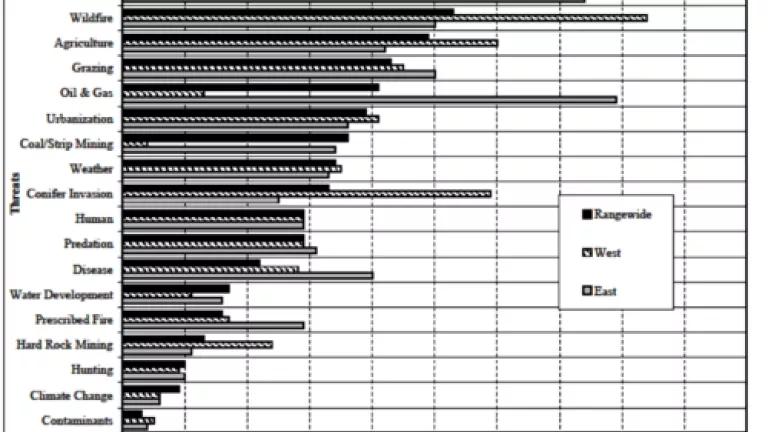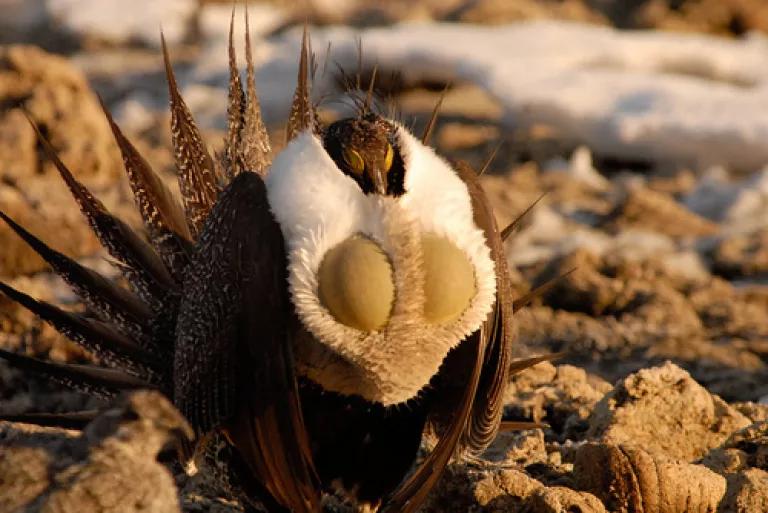
Montana Fish, Wildlife & Parks recently proposed closing this fall’s sage grouse hunting season, as spring population counts indicate no improvement from last year’s dismal numbers. The announcement surprised a lot of folks, as Montana’s sage grouse population is one of the strongest in the iconic bird’s 11-state range.
And when it comes to sage grouse, the key to the bird’s long-term future is protecting its habitat. Dwindling sage grouse numbers across the West are due to the destruction of their sagebrush habitat, not hunting. As you can see in the U.S. Fish and Wildlife Service chart below, things like oil and gas drilling, agriculture, livestock grazing, invasive species and other surface disturbances have massive negative impacts and are the biggest threats to sage grouse.
The impacts have been so drastic that the sage grouse is yet again a candidate for protection under the Endangered Species Act – with a listing decision to be likely decided by 2015. In an attempt to protect sage grouse now and avoid adding it to the federal endangered species list, diverse stakeholders, through state and regional sage grouse conservation plans, have taken a stab at addressing sage grouse threats.
While many unlikely allies have come to the table in these conservation discussions, most plans unfortunately fall short, as they fail to adequately constrain certain recognized threats, especially livestock grazing and oil and gas development. For example, the most recent science has determined that, at a minimum, a four-mile buffer from development is needed around the most important sage grouse habitat, but some plans only restrict oil and gas development to a mere ¼ mile buffer (while other uses, like solar, are prohibited from developing within a five-mile range). Likewise, while certain aspects of livestock grazing have been addressed in state and regional plans, most don’t adequately address the problem of cheatgrass, an invasive species associated with grazing that is having a devastating impact on sagebrush habitat.
So, while putting some restrictions on sage grouse hunting might make sense in the face of a 48% population decline in Montana, we shouldn’t fool ourselves into thinking this will positively impact sage grouse numbers. We need to focus on legitimately addressing the most egregious culprits of sagebrush habitat degradation.

Photo credit: Rob Crow at http://bit.ly/1r1GoeU
